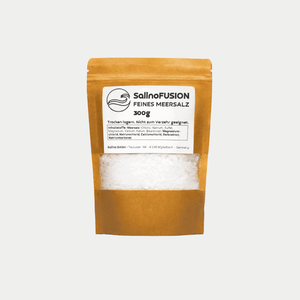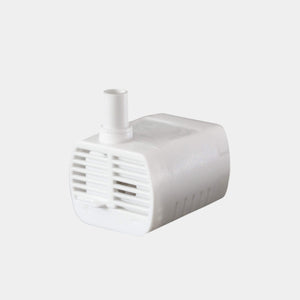Air pollution is abstract. You can sometimes smell it, on hot summer days or when the wind is unfavorable. But most of the time it's invisible – a mixture of particulate matter, nitrogen dioxide, ozone, and other particles that drift through our streets, accumulate in urban canyons, and enter our airways. Especially those of children.
Because children's lungs aren't like adult lungs. They're more vulnerable, more permeable, and hungrier for air. Doctors point out that children breathe more air per kilogram of body weight than adults and thus absorb more pollutants while their lungs, bodies, and brains are still developing. What has become normal in urban areas—the daily dose of particulate matter and nitrogen oxides—leaves its mark. In tiny bronchi. In immature immune systems. In bodies that have to learn what "normal" is.
This article is a journey into the invisible world of urban air pollution. It explores the specific effects of particulate matter and NO₂ on children's airways. It also attempts to understand why the youngest among us pay the highest price for our way of life.
The invisible burden: Why children are particularly affected

When you walk through a German city, you see cars, buses, construction sites, and urban canyons. What you don't see is the concentration of particles smaller than a hundredth of a human hair. PM2.5 – these are particles with a diameter of less than 2.5 micrometers. They are so small that they can bypass the natural filtration systems of our respiratory tract and penetrate deep into the lungs. Experts believe that some even reach the bloodstream.
Scientists agree: children are more sensitive to air pollution than adults. Their lungs, brains, and immune systems are still developing. Their airways are therefore more permeable. In addition, children breathe faster than adults, which means they inhale more air relative to their body weight.
Closer to the ground, closer to danger
There's another factor that makes children particularly vulnerable: their size. Small children are closer to the ground, where pollutant concentrations are particularly high. They breathe more often than adults through their mouths rather than their noses, thereby bypassing the natural filtering function of the nasal mucous membranes.
If you imagine a child in a stroller being pushed through the city at the height of the exhaust pipes, the problem becomes vivid. While adults breathe at a height of about 1.60 to 1.80 meters, small children are in a zone where pollution is at its highest. Every traffic jam, every bus starting, every truck at a red light creates a cloud of exhaust fumes – right where the child is sitting.
What exactly does air pollution do
The health consequences are not a distant prospect, not theoretical risks. They are manifesting themselves in the here and now. Research repeatedly shows that young children who live near busy roads are particularly susceptible to respiratory diseases – asthma, for example, is more common in them.
The list of documented effects is long: increased susceptibility to respiratory infections, reduced lung function, earlier and more severe asthma symptoms, chronic bronchitis, and allergies. But there are also more subtle effects: delayed lung development, elevated inflammatory markers, and impaired immune response. Health experts warn that the effects can begin in the womb and continue throughout childhood—sometimes beyond.
Fine dust and NO₂: The main players in urban air pollution

When people talk about air pollution, two terms usually come to mind: particulate matter and nitrogen dioxide. But what exactly do they mean? And why are these two pollutants so problematic for children's respiratory systems?
Fine dust: The particles that go too deep
Fine particulate matter is a collective term for microscopic particles suspended in the air. There are two main categories: PM10 (particles with a diameter of less than 10 micrometers) and PM2.5 (particles with a diameter of less than 2.5 micrometers). The smaller the particles, the more dangerous they are—because they can penetrate deeper into the respiratory tract.
PM10 particles usually remain in the upper respiratory tract. They can irritate mucous membranes, trigger coughing, and cause inflammation. PM2.5 particles, on the other hand, reach the alveoli, where gas exchange takes place. Doctors suspect that from there they enter the bloodstream and can cause damage throughout the body—in the heart, brain, and other organs.
The sources are diverse: exhaust fumes from combustion engines, tire wear, brake dust, industrial emissions, heating systems, construction sites. In German cities, road traffic is the main source. Every diesel truck, every accelerating car, every braking tram contributes.
Nitrogen dioxide: The gas that burns
NO₂ is primarily produced during combustion processes – in car engines, power plants, and heating systems. It is a reddish-brown, pungent-smelling gas that can severely irritate the respiratory tract. It is particularly problematic in pre-damaged airways, where it can lead to bronchial constriction or inflammation.
In children with asthma, NO₂ can trigger attacks. In healthy children, it can damage the respiratory mucous membranes, making them more susceptible to infections. In the long term, experts warn, high NO₂ exposure can impair lung development and promote chronic respiratory diseases.
In Germany, the current annual average limit for NO₂ is 40 micrograms per cubic meter. However, international health organizations have drastically tightened their recommendations in recent years and now recommend significantly lower values – a quarter of the previous limit. This demonstrates that what is still legally permitted has long been problematic for health.
The reality in German cities
Despite improvements in recent years, the limits are still exceeded in many places – especially on busy roads. In Stuttgart, Munich, Cologne, and Hamburg, there are monitoring stations that regularly sound the alarm. And even where the limits are formally met, pollution levels often far exceed international recommendations.
This means that millions of children in Germany breathe air every day that, according to scientific standards, is considered harmful to their health. Not acutely toxic, but chronically harmful. Day after day, breath after breath.
The geography of bad air: Where children are most affected
Air pollution is democratic—in the sense that it affects everyone. But it is also profoundly unfair. Because the burden is unevenly distributed. Some neighborhoods, some streets, some residential areas are significantly more affected than others.
Main roads: The hotspots of pollution
The highest pollutant concentrations are found along busy roads. Those living directly on a major thoroughfare are exposed to significantly higher levels of pollution than those living on a quiet side street. The difference can be significant—even within the same neighborhood.
For children living on such streets, this means that every time they open the window, when they play on the balcony, when they go to daycare or school, they breathe in a significantly higher dose of particulate matter and NO₂ than their peers a few hundred meters away.
Social inequality and air quality
It's no coincidence that lower-income urban neighborhoods are often more polluted. Apartments on main roads are cheaper. Green, quiet neighborhoods are more expensive. The result: families with fewer financial resources are more likely to live in areas with poorer air quality.
This is a form of environmental injustice that is rarely explicitly addressed. Children from socially disadvantaged families not only have less access to healthcare, healthy nutrition, or physical activity opportunities—they also breathe poorer air. And this is true from birth.
The role of green spaces
Parks, trees, and green courtyards are more than just places to relax. They're air filters. Trees bind particulate matter, reduce NO₂, and produce oxygen. Studies suggest that the more green space in a neighborhood, the better the air quality—and the lower the rate of respiratory diseases among children.
But here, too, the injustice becomes apparent: Green neighborhoods are usually wealthier districts. Socially disadvantaged areas are often grayer, more densely sealed, and more polluted. Children growing up there not only have less space to play—they also have less clean air to breathe.
What happens in the respiratory tract: A journey inside

To understand why air pollution is so harmful, it is worth looking at what happens in the respiratory tract when a child breathes polluted air.
The first line of defense: nose and throat
Normally, the nose and throat act as filters. Hair in the nose traps larger particles. Mucous membranes bind dust and pathogens, which are then swallowed or coughed out. But this mechanism only works to a limited extent. Ultrafine particles—that is, PM2.5 and smaller—bypass this filter. And when children breathe through their mouths, as they often do, this first barrier is also eliminated.
In the bronchi: Where inflammation begins
When particulate matter and NO₂ enter the bronchi, they encounter sensitive mucous membranes. The particles settle on the walls, triggering inflammatory reactions. The immune system reacts—a protective mechanism, in principle. But with chronic exposure, the acute defense reaction turns into persistent inflammation.
The consequences: The mucous membranes swell, produce more mucus, and the airways constrict. In children with asthma, this can trigger an attack. In healthy children, it means increased susceptibility to infections, a chronic cough, and reduced lung function.
In the alveoli: The transition into the blood
The smallest particles—PM2.5 and ultrafine particles below 0.1 micrometers—reach the alveoli, the air sacs in the lungs, where oxygen exchange takes place. Scientists suspect that they can pass through the thin membrane between air and blood and enter the circulation.
From there, they can potentially reach the entire body. Research has found evidence that particulate matter can be detected in the brain, liver, and heart. The long-term effects are not yet fully understood, but initial findings suggest possible links with neurodevelopmental disorders, cardiovascular problems, and systemic inflammation.
The silent damage: long-term developmental impairment
The insidious thing about air pollution is that it usually doesn't have an acute effect, but rather a gradual one. A child exposed to polluted air daily won't become ill immediately. But over months and years, the micro-damage accumulates. The lungs don't develop optimally. The immune system overreacts or becomes weakened. Susceptibility to chronic diseases increases.
Some children develop asthma. Others simply have more frequent bouts of bronchitis. Still others are more susceptible to allergies. And some carry the consequences for their entire lives – in the form of reduced lung function, which they only truly notice as adults.
Between resignation and agency: What families can do
 The news that the air our children breathe is making them sick can be overwhelming. Paralyzing. You can't just leave the city. You can't change transportation policy single-handedly. But you're not completely powerless either.
The news that the air our children breathe is making them sick can be overwhelming. Paralyzing. You can't just leave the city. You can't change transportation policy single-handedly. But you're not completely powerless either.
The big levers: politics and society
Real change requires structural measures. A transport revolution. Expansion of public transport. Driving bans for the dirtiest vehicles. Speed limits that reduce not only the risk of accidents but also emissions. Expansion of bike paths. Greening of cities. Stricter emissions standards for industry and heating systems.
These aren't individual solutions, but collective necessities. Parents can advocate for them – through civic initiatives, local politics, and parent associations. Every voice demanding clean air is a step in the right direction.
The small steps: What is possible within your own radius
But even on a smaller scale, there is scope for action. Not as a replacement for structural changes, but as a complement:
Route planning: If possible, choose routes to daycare or school that don't run along major roads. Sometimes a detour through quieter streets is a healthier choice.
Ventilation habits: Keep windows closed during rush hour. Ventilate early in the morning or late in the evening when pollution levels are lower.
Improve indoor air quality: You can influence the air quality in your home. Use air-purifying plants, regularly ventilate, and avoid sources of pollutants in the home (smoking, harsh cleaning products, and cheap furniture with fumes).
Seek out green oases: Spend time in parks, forests, or on the outskirts of town. Every hour spent in clean air is a relief for your respiratory system.
The role of salt air: A complementary support
In this context, approaches that actively support and regenerate the respiratory system are also gaining importance. Salt air is one of them—not a solution to the problem of air pollution, but a way to mitigate its effects.
For those who can't regularly travel to the sea or a salt bath, compact salt air devices offer a practical alternative. The fine salt particles help cleanse the respiratory tract, relieve inflammation, and support the self-healing powers of the mucous membranes—this can be a soothing addition, especially after days of high pollution.
The future breathes differently: A necessary outlook
Air pollution isn't a law of nature. It's the result of decisions—political, economic, and individual. And it can be reversed. Not overnight, but step by step.
The good news: Things are getting better
Over the past twenty years, air quality in German cities has improved significantly. Stricter emissions standards, clean technologies, and low-emission zones have all had an impact. Particulate matter pollution has decreased. NO₂ levels are lower than they were a decade ago.
But they're still too high. Compared to international recommendations, most urban children still breathe air that's harmful to their health. There's still much to be done.
What is needed: Courage to make radical changes
The transport transition is more than a climate measure. It's a health measure. Every fewer car on the road means less particulate matter, less NO₂, and fewer sick children. Every more tree means cleaner air. Every car-free zone means places where children can breathe freely.
It takes courage from politicians to make unpopular decisions. But it also requires a society willing to embrace change – knowing that it's not about sacrifice, but about gain. It's about healthier children, more livable cities, a future where breathing doesn't make you sick.
A space to breathe – for everyone
Ultimately, it comes down to a simple demand: every child has the right to clean air. Regardless of where they live, their skin color, what passport their parents hold, or how much money the family has. Clean air is not a luxury. It is a fundamental right.
Until this right is guaranteed everywhere, it is up to all of us—as parents, as citizens, as a society—to fight for it. And at the same time, to do what is possible within our own sphere of influence to protect and strengthen our children's airways.
Note: For families living in heavily polluted urban areas, supporting the respiratory system with salt air can be a useful addition. A compact salt air device like the Mini-Saline diffuses fine salt particles into the living space and can help soothe irritated airways and support the lungs' natural self-cleaning process – especially on days with high levels of pollution or after extended periods in traffic. It doesn't replace structural air pollution control measures, but it can provide beneficial support in the home environment.
(Image source: Envato)



